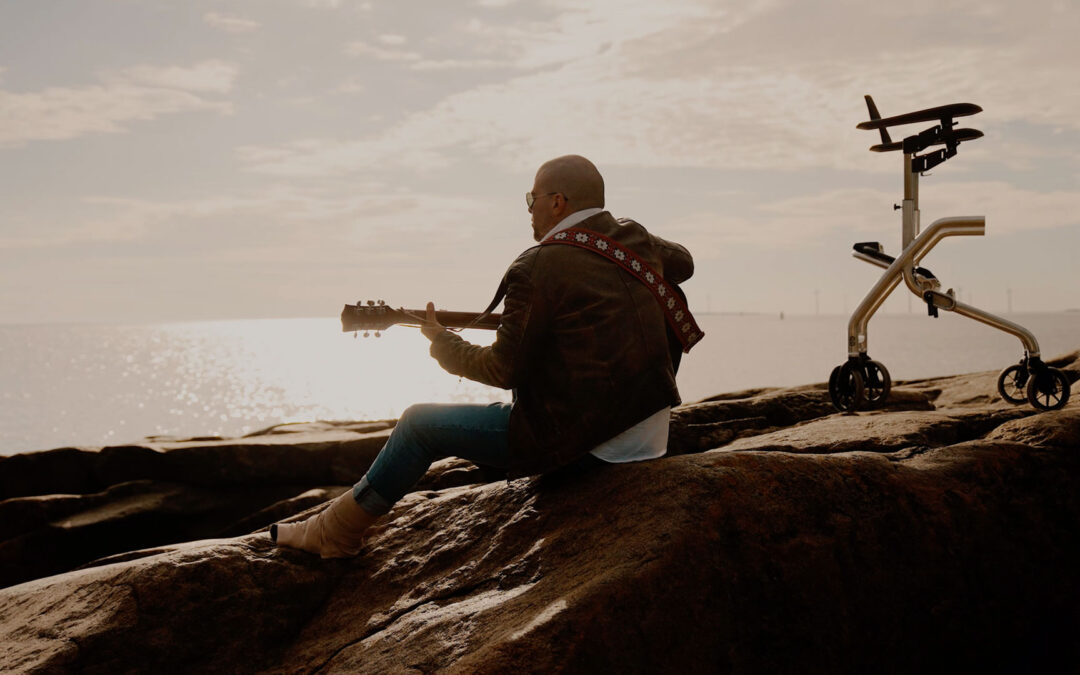Can design make life even slightly more pleasant? I believe it can, as successful industrial design produces machines, devices and products that are more functional, usable and ergonomic – as well as prettier to look at.
The 3rd of February is Alvar Aalto’s birthday. It is also the day of Finnish design and architecture, and it is recommended that the Finnish flag be hoisted in celebration. Surrounding the flag-flying day, several events are being held across Finland with the shared theme of quality of life.
Improving the quality of life speaks to me on a deep level, because ultimately that is what design and the work of an industrial designer are all about. If a product is designed well, it also works well and is easy and intuitive to use. When a certain product causes satisfaction or even joy – preferably both when used and when looked at – the quality of life also inevitably improves. And vice versa: we all know how annoying it is when something works poorly or not at all. Or when a thing or object is ugly when it could just as easily be aesthetically pleasing.
Quality of life is also quality of working life
Muodonmuutos specialises in the design of moving working machinery and heavy-duty professional equipment. This means we have an obligation to carefully consider how we can make the work of the professionals who use these machines easier and help them perform in their work better, with more precision and with less stress.
Professional equipment is used for several hours each day, which easily amounts to over a thousand hours annually, so the functionality of the tools is no insignificant matter. Besides the flow of work, design can also affect work stamina and comfort, as well as occupational health, safety and well-being.
Key words in improving the quality of working life naturally include usability and ergonomics, which are ever-present in everything we do. As well as aesthetics, of course, which I cannot help but invoke at every turn.
Quality of life is the result of countless tiny user experiences.
People often connect quality of life to fairly major matters, such as happiness, health and familial and personal relationships. While this is of course true, one would do well to also keep in mind that our everyday life consists of countless tiny interactions with things, objects and products. If these interactions are positive, it just means that life is more comfortable. On the other hand, if these interactions feel like a constant struggle, quality of life cannot be that high either.
In addition to working with work equipment, Muodonmuutos has been involved in countless projects where we have been able to facilitate people’s everyday life. For example, we have had the opportunity to ponder how hand paper towels come easily out of the dispenser or how a dustpan with a long shaft stays upright even when the broom is attached. Or how a rubber lip in a car’s snow brush helps remove slush and wipe the windows clean. Or how do we design a yard lamp so that it produces even and glare-free light, or how the control panel of an AC machine can be made clear and easy to use. Or what a patient bed must be like so that it can be effortlessly cleaned for the next patient. Small insights with a tremendous impact on the fluency of everyday life and thus the quality of life, I would dare to say.
MiiMove is a good example of improved quality of life
When I was thinking about the impact design has on the quality of life, MiiMove, one of our interesting recent projects, came to mind. MiiMove is a new and innovative walking aid developed in Finland that clearly improves the quality of life of rehabilitees and people suffering from difficulties with movement.
MiiMove solves a problem with traditional rolling walkers. A person using a rolling walker has to lean forward and push the device, which means they are walking in an unergonomic hunched posture. It makes a person appear old, frail and sickly, which is probably how it also makes them feel.
With MiiMove, however, the user is able to walk upright in the middle of the device, meaning their posture is straight and their movement is easier. With this walking aid a person is able to live normally, expand their sphere of life and meet other people with their back straight and chin up – both physically and mentally.
You can delve deeper into the development of the MiiMove prototypes on the project’s reference page.
Is design worth the effort?
While writing the previous thoughts I was left wondering whether it was justified to claim that quality of life can be improved by an ergonomic or aesthetically pleasing saltshaker when we are mired in wars, famines and other infringements on human dignity.
During this deliberation I was browsing the website of ArchInfo, the organisation behind the festival of architecture and design, and I came across a comforting thought.
“Global crises and major social shifts require adaptability from all of us, but good living must endure regardless of the changes.“
I firmly believe that design can improve the quality of life. I also believe that it is worth the effort, as every carefully designed machine, object or product makes life that much more pleasant and beautiful, even on those greyer days.
To view the plentiful programme of the festival of architecture and design, click here.

